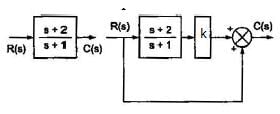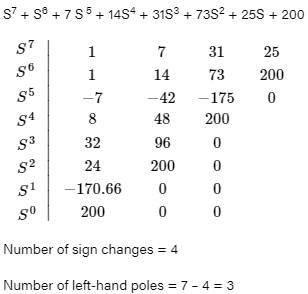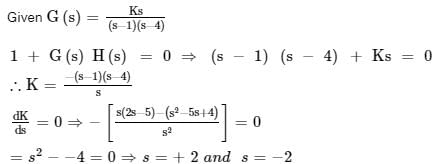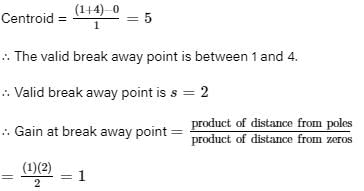Test: Control Systems - 2 - Electrical Engineering (EE) MCQ
25 Questions MCQ Test - Test: Control Systems - 2
The transform function of a system is the Laplace transform of
If the open-loop transfer function is a ratio of a numerator polynomial of degree 'm' and a denominator polynomial of degree 'n' then the integer (n-m) represents the number of
Despite the presence of negative feedback, control system still have problems of instability because the
Consider the following statements in connection with the feedback of control systems:
1. Feedback can improve stability or be harmful to stability if it is not properly applied.
2. Feedback can always improve stability.
3. In many situations the feedback can reduce the effect of noise and disturbance on system performance.
4. In general the sensitivity of the system gain of a feedback system to a parameter variatio
depends on, where the parameter is located.
Which of the above statements are correct ?
Consider the following statements:
1. The effect of feedback is to reduce the system error.
2. Feedback increases the gain of the system in one frequency range but decreases in another.
3. Feedback can cause a system that is originally stable to become unstable.
Which of these statements are correct ?
Consider the following statements: Feedback in control system can be used
1. to reduce the sensitivity of the system to parameter variations and disturbances.
2. to change time constant of the system.
3. to increase loop gain of the system
Which of the statement given above are correct ?
With negative feedback in a closed loop control system, the system sensitivity to paramete variations
The transfer function of a system is
The characteristic equation of the system is
For what value of K, are the two block diagrams as shown below equivalent ?

For the signal flow diagram shown in the given figure, the transmittance between x2 and x1 is
In the closed loop control system, proportional integral (Pl) controller is preferred compared to proportional controller (P):
Consider the loop transfer function
In the roots locus diagram the controid will be located at
The number of roots of the polynomial, s7 + s6 + 7s5 + 14s4 + 31s3 + 73s2 + 25s + 200, in the open left half of the complex plane is
The gain at the breakaway point of the root locus of a unity feedback system with open loop transfer function
G(s)=Ks/{(s−1)(s−4)} is
First column elements of the Routh's tabulation are 3, 5 -3/4, 1/2, 2. It means that there
The response c(t) of a system is described by te differential equation
The system response is
The polar plot of a transfer function passes through the critical point (–1.0). The gain margin is
The transfer function of a phase lead compensator is given by

The frequency (in rad/sec), at which ∠D(jω) is maximum, is

























